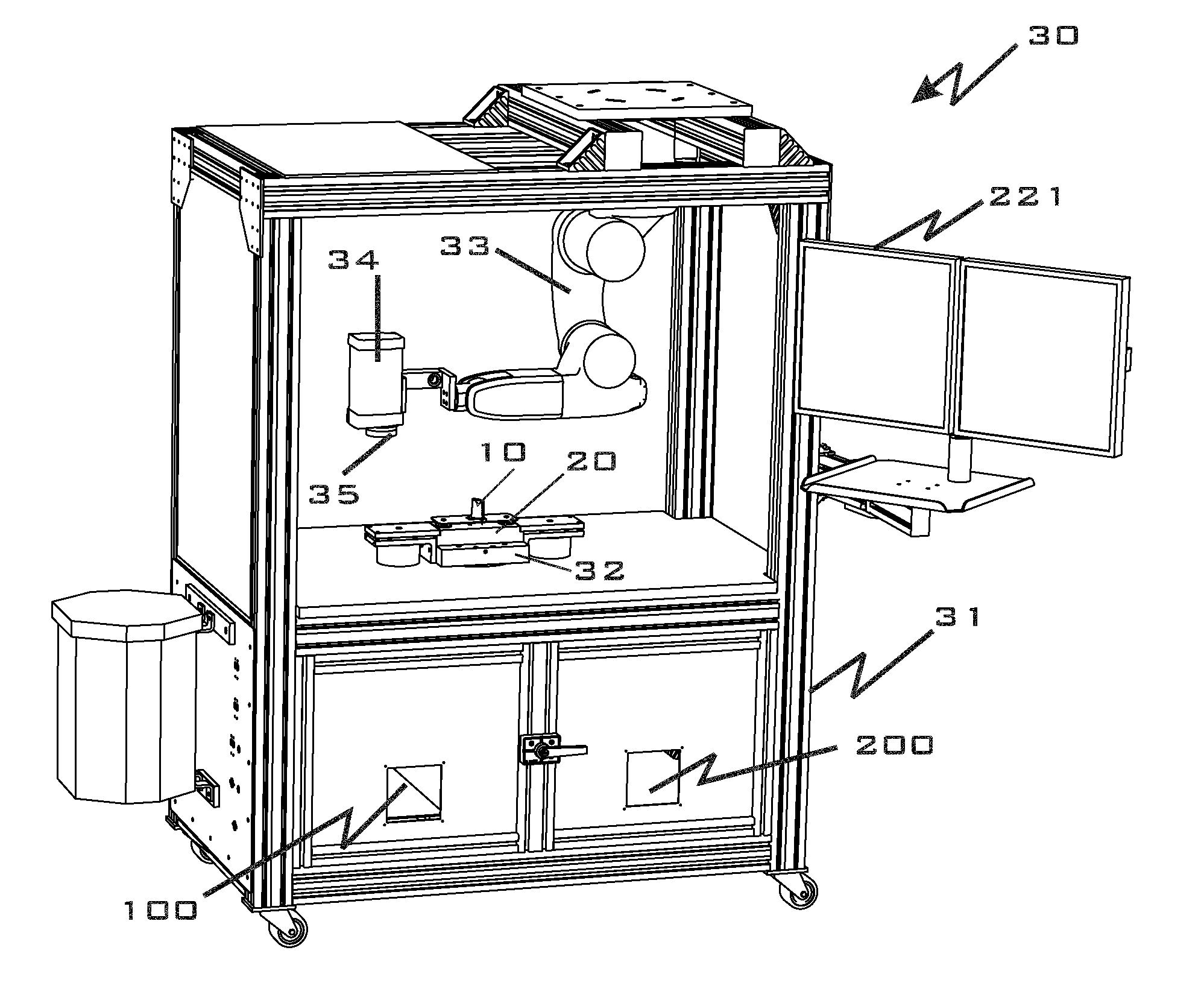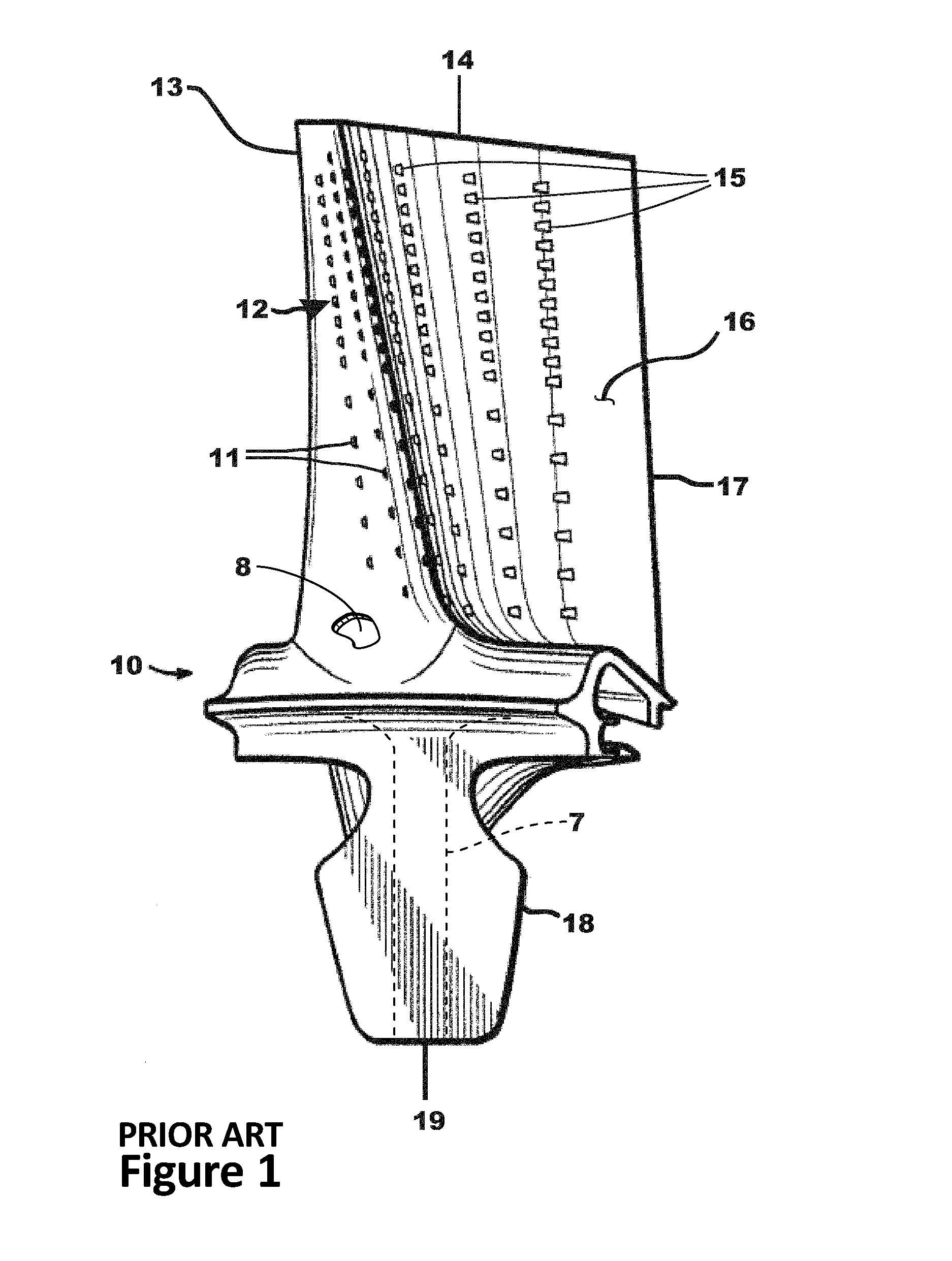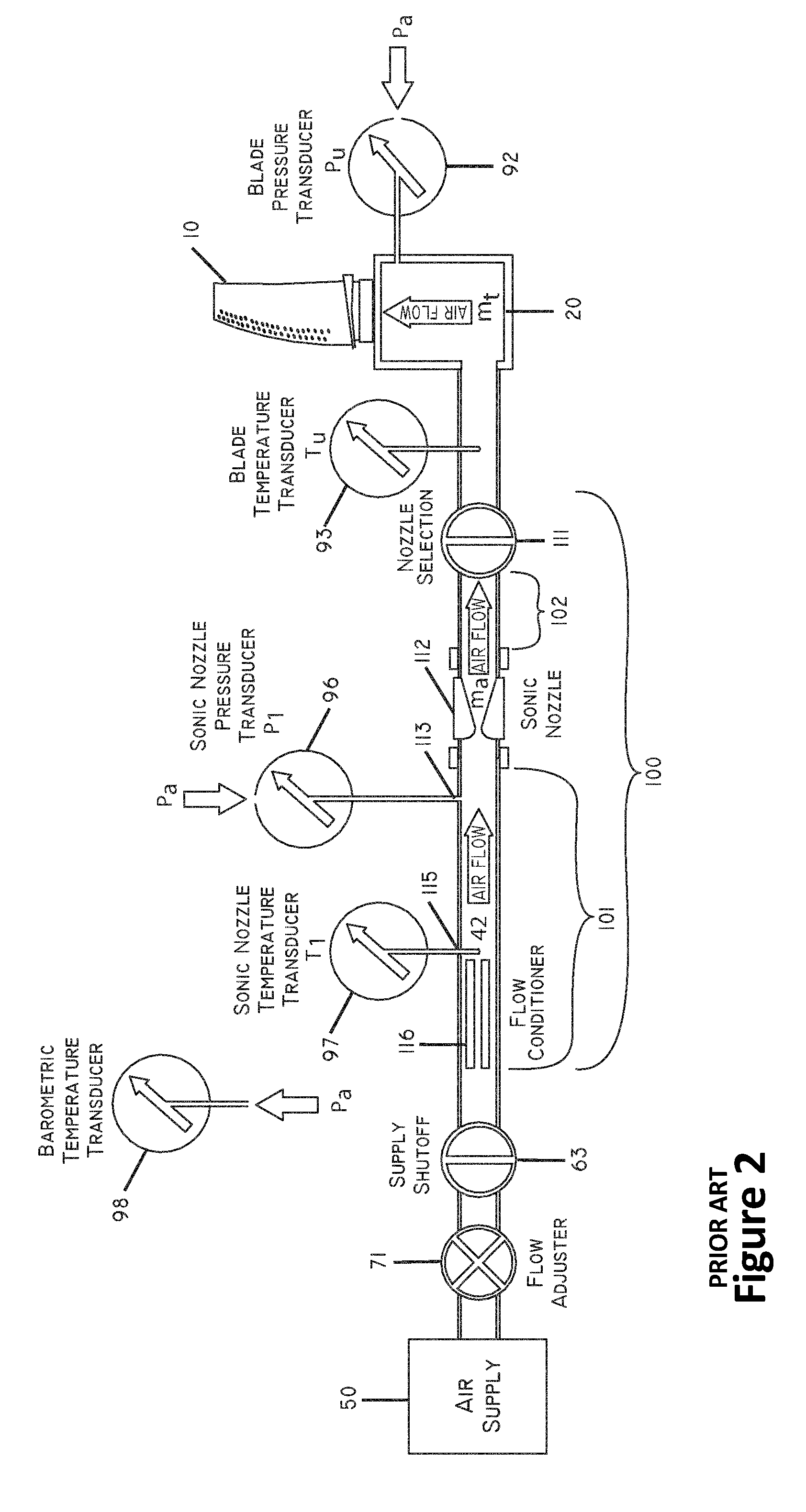Apparatus and Method For Measurement of the Film Cooling Effect Produced By Air Cooled Gas Turbine Components
a gas turbine and film cooling technology, applied in the direction of material heat development, optical radiation measurement, instruments, etc., can solve the problems of reducing the thermal efficiency of the engine, and reducing the life of the blade, so as to reduce the manufacturing cost and cycle time, improve the quality of the gas turbine components, and reduce the
- Summary
- Abstract
- Description
- Claims
- Application Information
AI Technical Summary
Benefits of technology
Problems solved by technology
Method used
Image
Examples
first embodiment
[0055]Referring to FIGS. 1, 3, 4, 5, 7, 7A and 7B, an apparatus (30), the coordinated assemblage of both an airflow test machine (30a) and an infrared inspection machine (30b) is housed in the same cabinet (31). This apparatus (30), named a “film cooling inspection machine” is used to measure the film cooling effect (40) generated by film cooling features or openings (12) fabricated in a known blade (10). Common to both the airflow test machine (30a) and an infrared inspection machine (30b) is a flow fixture (20) for holding the blade (10) and a diverter valve (62) that isolates the two machines.
[0056]Referring to FIGS. 1, 4, 5, 6, 7 and 9, the blade (10) to be inspected is supported in the blade adapter plate (25), as best shown in FIG. 5. This adapter plate (25) is held in place on top of the flow fixture (20) which is mounted on top of the plenum fixture (32) which in turn is mounted in the middle of the cabinet (31) of the film cooling inspection machine (30), as shown in FIG. 4...
second embodiment
[0062]Referring to FIGS. 7A and 7B and equations 12, 13 and 26, in the apparatus, the airflow test and infrared inspection machines (30a, 30b) are discrete machines. In this embodiment, once both the mass rate of airflow, ms or mc, and relative individual cooling effect, Ai, have been measured, the absolute individual film cooling effect Ei, is determined by the method described herein, except the mass rate of airflow and relative individual cooling effect area are recalled from the network database (300), prior to executing the herein described quantification process. This quantification process is coded in an appropriate inspection cycle program and executed on a control to produce the end result described herein. This control may be contained in either systems, or an independent control that has access to the network database.
[0063]Referring to FIGS. 3 and 11, in the exemplary embodiment of the absolute measurement method to measure the film cooling effect (40) of individual cool...
PUM
| Property | Measurement | Unit |
|---|---|---|
| melting temperature | aaaaa | aaaaa |
| melting temperature | aaaaa | aaaaa |
| pressure | aaaaa | aaaaa |
Abstract
Description
Claims
Application Information
 Login to View More
Login to View More - R&D
- Intellectual Property
- Life Sciences
- Materials
- Tech Scout
- Unparalleled Data Quality
- Higher Quality Content
- 60% Fewer Hallucinations
Browse by: Latest US Patents, China's latest patents, Technical Efficacy Thesaurus, Application Domain, Technology Topic, Popular Technical Reports.
© 2025 PatSnap. All rights reserved.Legal|Privacy policy|Modern Slavery Act Transparency Statement|Sitemap|About US| Contact US: help@patsnap.com



